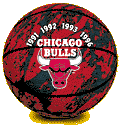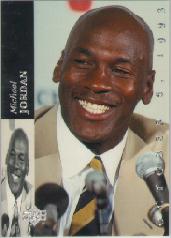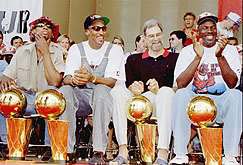Jesse's Home Page
| 
|

About me:
My Hobbies:
|
|
- collecting sneakers
- going places
- rock climbing
- skiing
|
- playing basketball
- movies
- shopping for cool clothing
- arts and crafts
|
Links for 7th grade science project (JK and AL):
- Brain
Plasticity and Learning - a Visual learning activity
- "Rewiring" the Brain
- Original experiment, 18 pgs - PDF (1093 KB)
- Student Worksheet
- Advanced
extra hypotheses
- When a person views an object through a prism the
object appears to shift its position in space. This is because the rays of
light that bring the object into the visual field are bent as they pass
through the prism. The result is that the object appears to be in a
different spot than it actually is. The object doesn't really move, it only
appears to move. This experiment demonstrates one of the fundamentals of the
visual process. What we see is sensed by the eye, processed by the brain,
and projected into space. The accuracy of our visual perception, the extent
to which it matches reality, is dependant not only upon the acuity of our
vision, but also on the efficiency of the brain processes that created the
images we see. It is important to understand that vision is a brain process
of which the eyes are only one component.
6. http://www.sfn.org/cnl/hons.html
VISUAL-MOTOR PLASTICITY
Prism goggles can be used to displace visual
input, and as a consequence visual-motor coordination is disrupted. This can be
demonstrated by having students throw an object at a target. Initially, large
errors will be head, with objects hitting far from the target center. With a
brief period of practice, compensation occurs for the visual displacement caused
by the prism goggles, and students are able to accurately hit the target.
We usually throw play-doh (or clay) balls at a small
chalk circle on a blackboard. One person throws; another marks where the ball
hits, others pickup the balls. If the class is well mannered or more advanced
the marker can place numbers for each hit; otherwise, any simple mark will do. A
different type of mark should be used for each part of the experiment. The
proctor places the balls in the thrower's hand, one at a time. It is important
that the thrower not look at his arm (especially during and after the prism
goggles have been put on - some online correction can occur if the arm is seen).
It is also important that the subject throw approximately the same way every
throw (i.e., overhand and about the same speed) since the adaptation appears to
be specific to the muscle synergy involved (this can be examined in more detail
if the students are interested, see below).
The experiment is done in three stages:
- The subject throws 10-15 normal throws. I ask a few
of the students to watch and assess the throws. After the throws I ask for a
summary of what happened. This is an excellent opportunity to stress the
importance of observation in science. "Pretty good" is not an
acceptable answer, but leads to the question "How can we get an
objective summary of the results?" After discussing opinions we usually
summarize the throws by drawing a circle around the marks (a measure of
variation) and sometimes putting an 'x' at the apparent center of the marks
(a measure of the mean).
- Place the prisms on the subject. It should be
emphasized to the subject to throw where they see the target. After they
start throwing remind them to keep aiming at the target and not consciously
correct their throws. The same method and questions are put to the students
as in (1). When the throws go way off, the children may need to be reminded
to watch what happens to the subsequent throws. It may take up to 50 throws
but eventually the student will come close to hitting the target. (The
student's can be asked if the subject is back to normal - after one close
ball many will say "yes"; this is where I commonly introduce in a
simple way the concept of sampling with reference to the variance circle
placed on the board during the normal throws).
- Take the prisms off the subject and have him throw
at the target. There should be a robust adaptation effect with the ball
going off to the other side (away from the direction of the error with the
prisms on). This is the dramatic and (for the children) unexpected result.
After several throws the subject adapts back to normal.
Throughout the experiment I emphasize observation.
After reviewing what happened (as seen by the students) hypotheses can be
introduced by asking "So can anybody explain what happened?". The
emphasis not on reviewing the data but on adding explanation.
There are three main points:
- We need to have some controls in order to have a
baseline to compare the novel state to.
- When we put the prisms on we make errors, but with
practice the body adapts.
- The adaptation is enduring. After the prisms are
removed the change in synergy remains.
Additional ideas for the more interested and/or
advanced students:
- How long will the adaptation persists? If time
permits and subjects are abundant, after showing the effect on one subject,
have a second subject complete steps 1 and 2 of the experiment. After
completing step 2 (throwing with prisms on), take the prisms off and have
them sit off to the side with their adapted hand behind their back and watch
the other students. After completing with the last student, have this
student now complete step 3. An aftereffect should still be seen (We have
waited up to 1´ hours and still seen an effect).
- What is being adapted? For example, after adapting
one arm, take the prisms off and see if the other arm shows the aftereffect.
How about if the child throws underhand? In neither case should an
adaptation be revealed. The adaptation seems to be specific to the muscle
synergy adapted, not the gaze alone (W.T. Thach et al., 1992).
- If numbers were used to mark the throws, then the
x-offset for each throw can be plotted. This can reveal the change in
behavior to older students who can interpret graphs.
MATERIALS:
The prism goggles used to demonstrate visual-motor
plasticity are made by attaching plastic Fresnel lenses to standard lab/workshop
safety goggles. The lenses we used produced 15 diopter (15*0.57 = 8.55 degrees)
leftward or (in another set) rightward shifts. You may be able to obtain Fresnel
lenses from an ophthalmologist or optician. Ours were ordered directly from a
distributor (Two distributors' names are listed below; $12.25/lens, as of
November, 1991). The lenses we use are manufactured by 3M Health Care,
Specialties Division. They are called "Press-On Optics". We had an
optician supply the safety goggles and attach the lenses. The charge was $17.
There are other suppliers of safety goggles (e.g. Fisher Scientific) that are
probably cheaper. You should be able to attach the lenses yourself by just
wetting them.
Fresnel lens distributors:
- Fresnel Prism and Lenses 1-715-349-2628
- Signet Armorlite 1-800-431-6905
Here are some photos of my favorite team, the Chicago Bulls:




![]()
